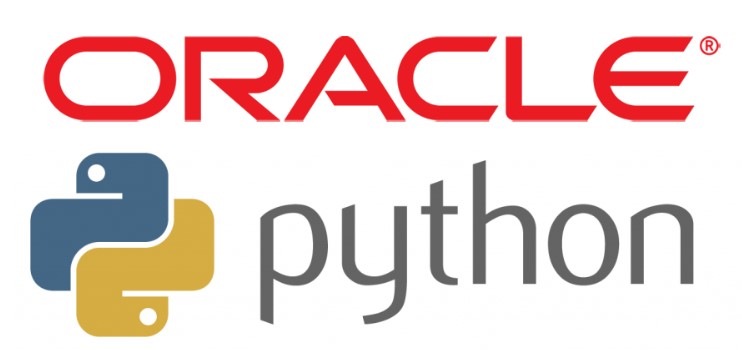Unlocking automation, integration, and efficiency in Oracle E-Business Suite using Python
Oracle E-Business Suite (EBS) remains a foundational ERP platform for many global enterprises. Traditionally, its extensibility has revolved around PL/SQL, Oracle Forms, and Java. However, modern development trends and business demands are shifting toward more flexible, open, and automation-ready tools.
Enter Python — a language widely adopted across industries for its simplicity, scalability, and vast ecosystem. When used strategically, Python can significantly enhance how Oracle EBS environments are managed, automated, and integrated, without replacing core ERP components.
In this article, we explore practical, real-world applications of Python in Oracle EBS and show how ERP professionals can leverage it to create value.
Key Use Cases: How Python Can Enhance Oracle EBS
1. Automating Data Extraction and Reporting
One of the most common Python applications in Oracle EBS is automating data extraction from the EBS database. Using the cx_Oracle or oracledb libraries, Python can establish secure connections to EBS and query live transactional data.
After extracting data, Python can use libraries like pandas to process, analyze, and reshape data into structured formats. Reports can be exported as Excel files (openpyxl, xlsxwriter), PDFs (reportlab), or even automatically emailed using smtplib.
Use case examples:
- Automatically generate monthly AP invoice reports
- Extract procurement metrics and compare against KPIs
- Schedule daily database health checks and notify teams of anomalies
2. Streamlining Oracle EBS Interfaces and Data Uploads
Python is highly effective for reading, validating, transforming, and inserting external data into Oracle EBS via interface tables. This is particularly useful during:
- Data migrations
- Periodic supplier invoice uploads
- Bulk item or price list updates
Python can validate input data formats (CSV, XML, JSON), ensure referential integrity, and insert clean records into staging tables. The process is fast, reliable, and scriptable.
Example:
A Python script reads validated invoice data from a shared folder and inserts it into AP_INVOICES_INTERFACE. The same script can then invoke a concurrent request to trigger the Oracle import process.
3. Calling Oracle EBS APIs
Oracle provides a wide range of PL/SQL-based public APIs. These can be directly invoked from Python using cursor.callproc() or cursor.callfunc().
This allows Python to:
- Create supplier records
- Submit purchase orders
- Validate journal entries
- Trigger HR transactions
This use of Python enables external systems or automation pipelines to interact with EBS programmatically.
4. Integrating Oracle EBS with Third-Party Systems
Python excels at building integration layers between EBS and external systems such as:
- Salesforce
- SAP
- Shopify
- ServiceNow
- Banks and logistics providers
Popular Python libraries such as requests (for REST APIs), zeep (for SOAP services), and paramiko (for SSH-based SFTP transfers) make EBS integrations faster and cheaper to build compared to traditional Java middleware.
You can also use frameworks like FastAPI or Flask to expose Oracle EBS data as RESTful APIs or consume third-party APIs that populate data into EBS tables.
5. Enabling AI and Advanced Analytics on EBS Data
Extracting EBS data and analyzing it using AI/ML tools is a growing trend in Oracle environments. Python makes this possible through libraries like:
scikit-learnfor machine learningprophetfor forecastingmatplotlibandseabornfor visualization
You can predict trends in sales, procurement, or cash flow based on historical Oracle EBS data — going far beyond what standard BI tools allow.
Technical Implementation: Connecting Python to Oracle EBS
Here is a basic connection example using Python:
import oracledb
connection = oracledb.connect(
user=”apps”,
password=”your_password”,
dsn=”host:port/service_name”
)
cursor = connection.cursor()
cursor.execute(“SELECT vendor_name FROM ap_suppliers WHERE rownum < 10”)
for row in cursor:
print(row)
This setup can be integrated into larger ETL pipelines, web applications, or automated job schedulers like Apache Airflow or cron.
When calling EBS APIs, make sure:
- The API is public and documented
- You have sufficient privileges
- You’re handling exceptions and validations properly
Recommended Python Tools and Libraries for Oracle EBS Projects
| Tool/Library | Purpose |
|---|---|
cx_Oracle / oracledb | Connect to Oracle database |
pandas | Data manipulation and analytics |
openpyxl, xlsxwriter | Excel file creation and formatting |
requests | API consumption (REST) |
zeep | SOAP web service integration |
flask, FastAPI | Create lightweight APIs |
airflow | Task scheduling and monitoring |
sqlalchemy | ORM for abstracting database connections |
Benefits of Using Python in Oracle EBS Environments
- Faster development and deployment cycles compared to PL/SQL
- Ability to integrate with modern APIs and systems
- Scalability and maintainability of codebase
- Greater automation capabilities for operational efficiency
- Access to AI, machine learning, and analytics libraries
Potential Pitfalls and Best Practices
- Avoid writing Python scripts that alter core EBS behavior or bypass internal validations
- Secure database credentials using environment variables or secrets managers
- Log all activity for auditing purposes
- Ensure Python scripts are version-controlled (e.g., using Git)
- Validate data thoroughly before inserting into EBS tables
Real-World Example: Automating Vendor Invoice Imports
Challenge:
A shared services team receives hundreds of vendor invoices weekly and enters them manually into Oracle Payables.
Solution using Python:
- Use
PyPDF2to extract data from scanned invoice PDFs - Transform and validate the data using
pandas - Load data into
AP_INVOICES_INTERFACEviacx_Oracle - Trigger Oracle’s Invoice Import concurrent program via SQL
Impact:
- Reduced data entry time by over 80%
- Fewer manual errors
- Audit-friendly log trail of all automated uploads
Conclusion
Python is becoming a powerful tool in the Oracle EBS ecosystem. While it doesn’t replace PL/SQL or Java for core application logic, it greatly enhances the capabilities around automation, integration, and analytics.
Whether you’re handling batch jobs, creating interfaces, building dashboards, or developing lightweight APIs, Python can bridge the gap between legacy ERP functionality and modern development practices.
Now is the perfect time for Oracle professionals to embrace Python and bring agility to their ERP environments.
Looking to automate your Oracle EBS workflows or build Python-powered ERP tools?
Subscribe to our newsletter for weekly tips, code snippets, and expert strategies for modernizing Oracle EBS.
Start building smarter EBS integrations today.



